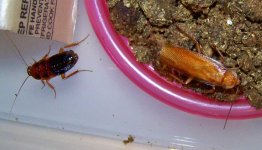cat_named_noodles
New member
I was cleaning cages and feeder containers, and doing general maintenance of all my critters today, when I decided to take pics of my feeders and colonies.
First is a pic of my T. molitor pupae. The darker one at the top are no good and will not turn into beetles. On the upper right of the dish is a newly emerged beetle (its exoskeleton has yet to harden, hence the blonde color.
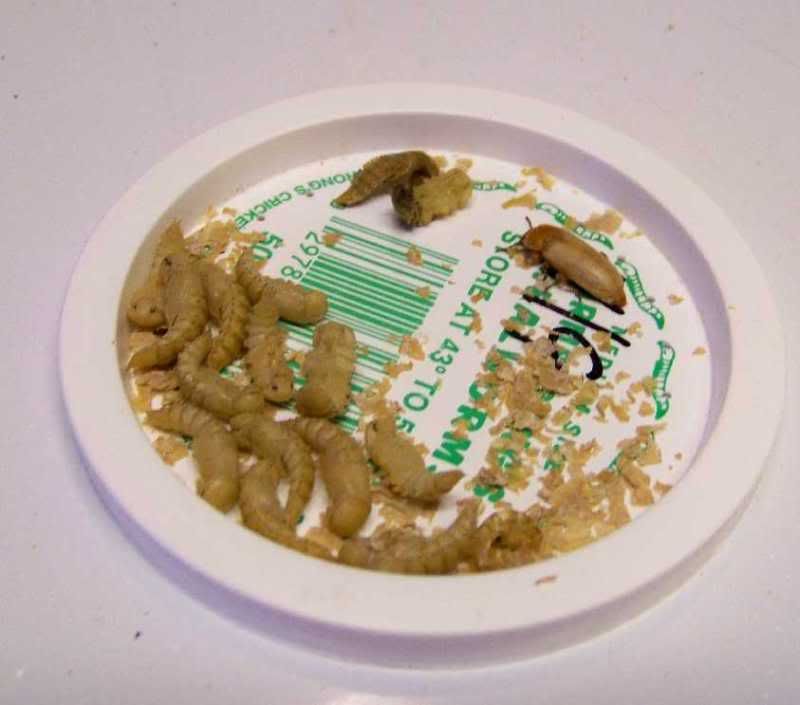
Here's a close-up of the new beetle.
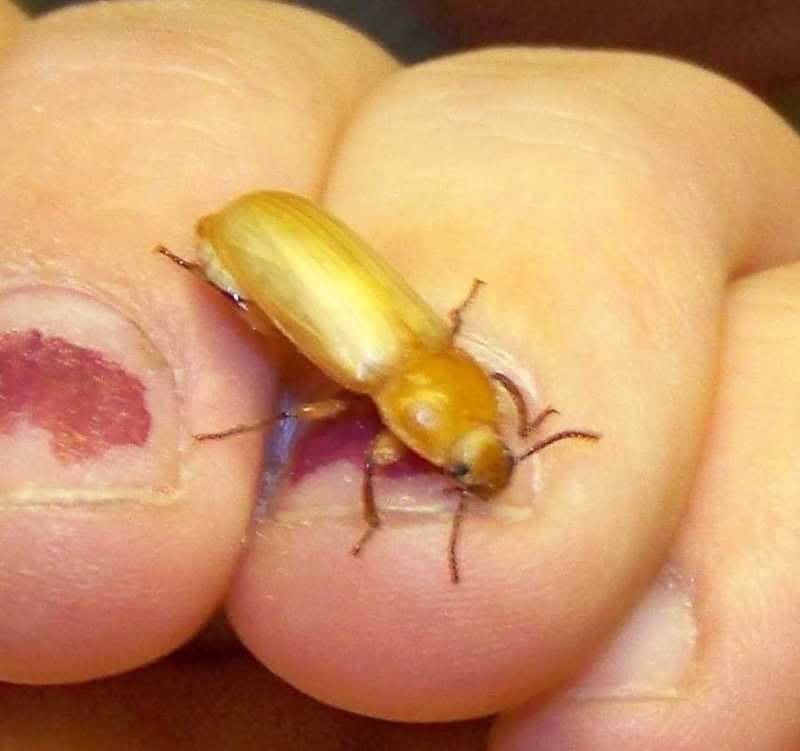
These are my mealworm colonies. The one on the left is for beetles and pupae, the one on the right has over 700 mealworms living in it.
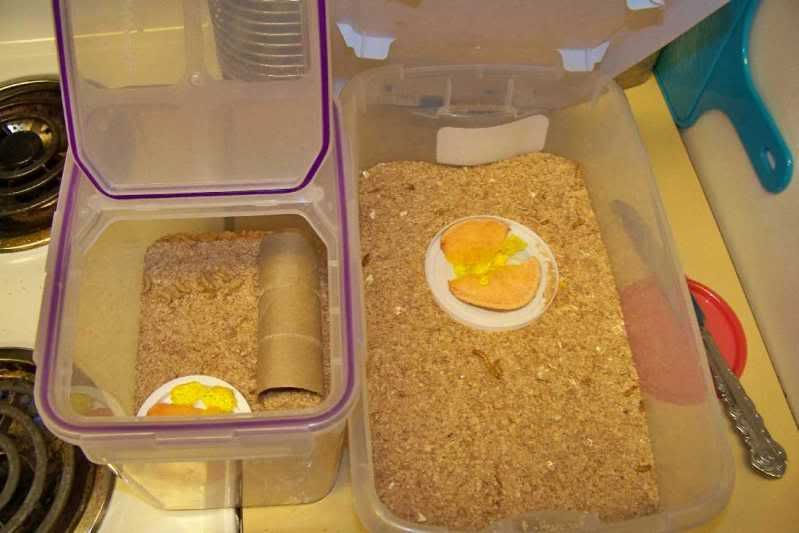
Here's various stages of the mealworm life cycle. On the far right is a 1/4" mealworm. Next to it is a mealworm two sheds away from pupating. In the middle is a small freshly shed mealworm, appearing white in color. On the far left is a pupa, and to its right a mealworm in the dark phase before pupating.
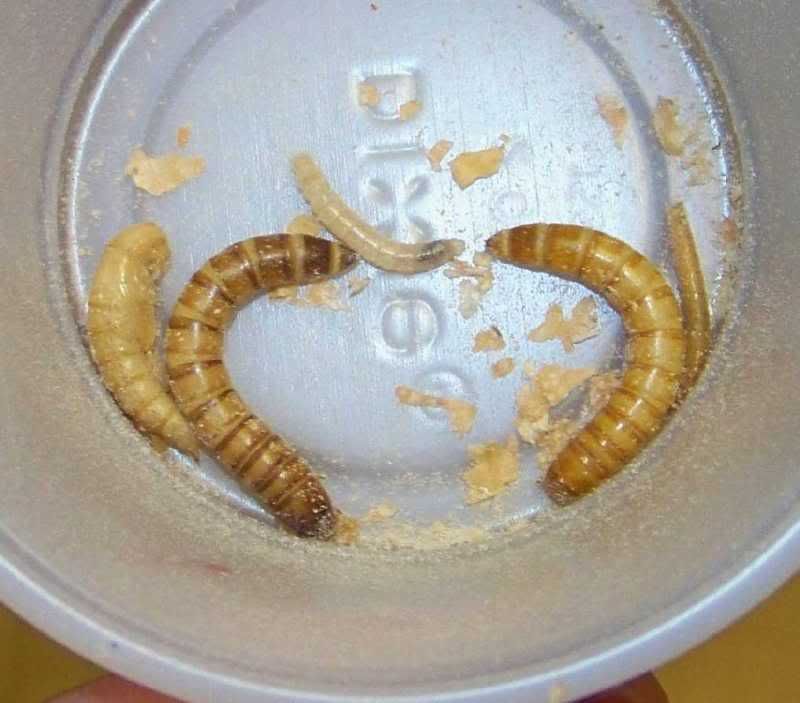
This is a pic of my D. hydei colony. It's has every stage of the fly's life cycle present. You can see several sizes of larvae, new and old pupae, and adults.
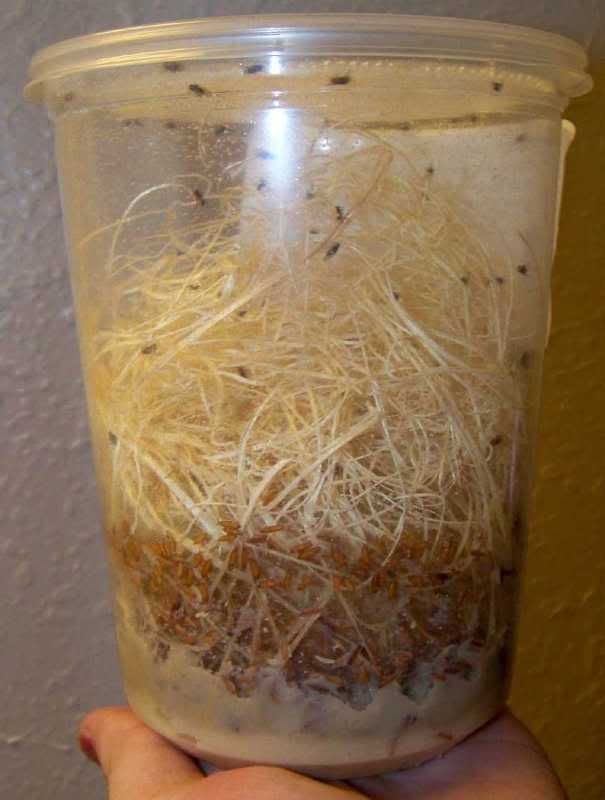
This is my B. lateralis roach colony. I currently have about 50-60 females and nymphs, so they aren't producing young at the moment. (Any body want to send me some males?) lol. With the egg crates on and off (before cleaning).
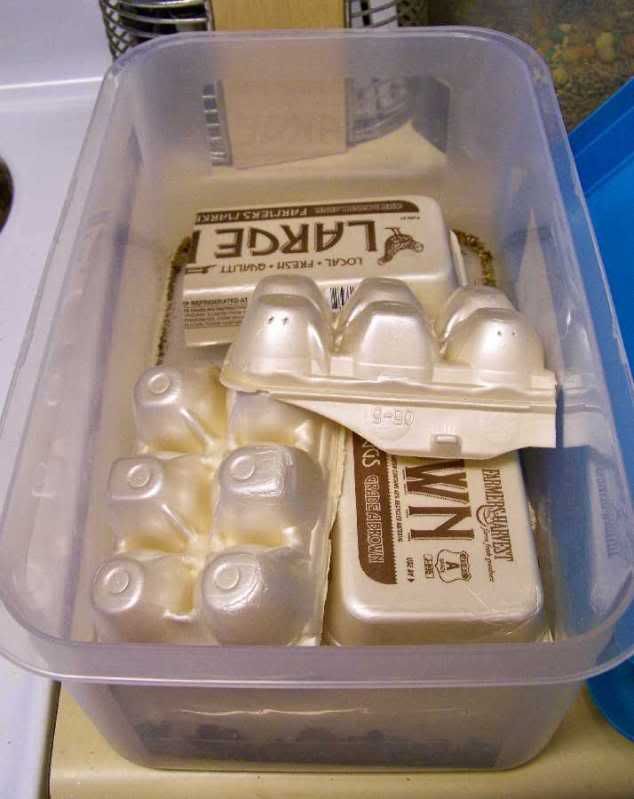
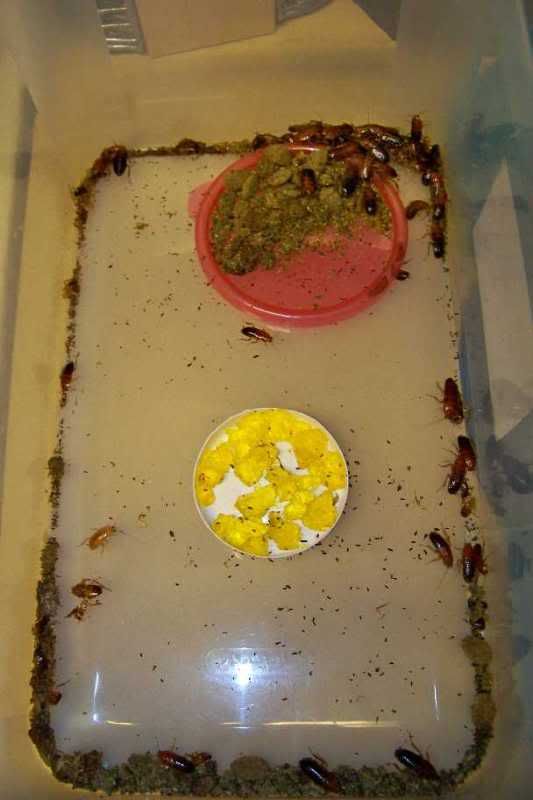
Here's all of them:
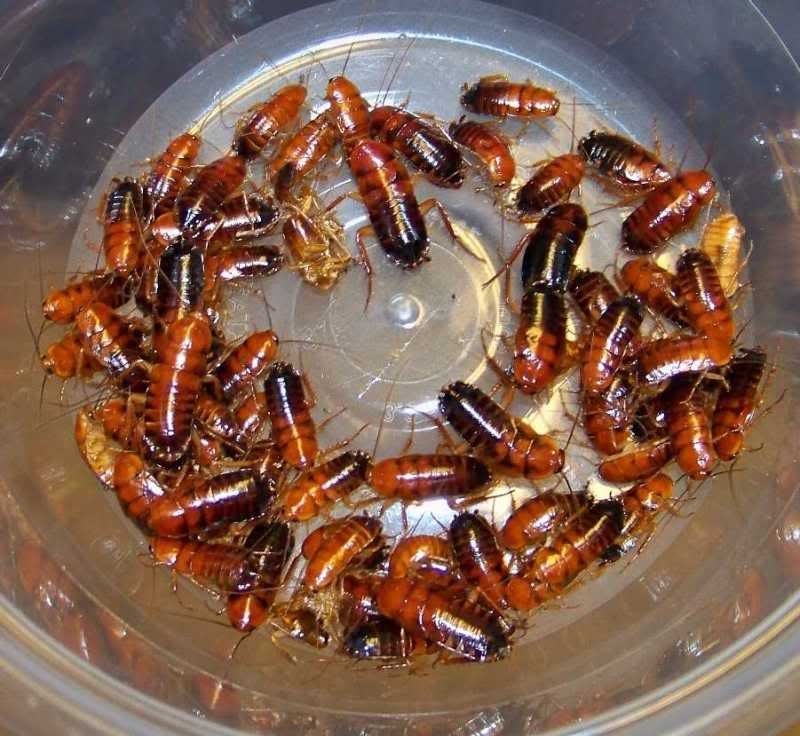
Two different sized nymphs and a sub-adult female (the blond one has just molted):
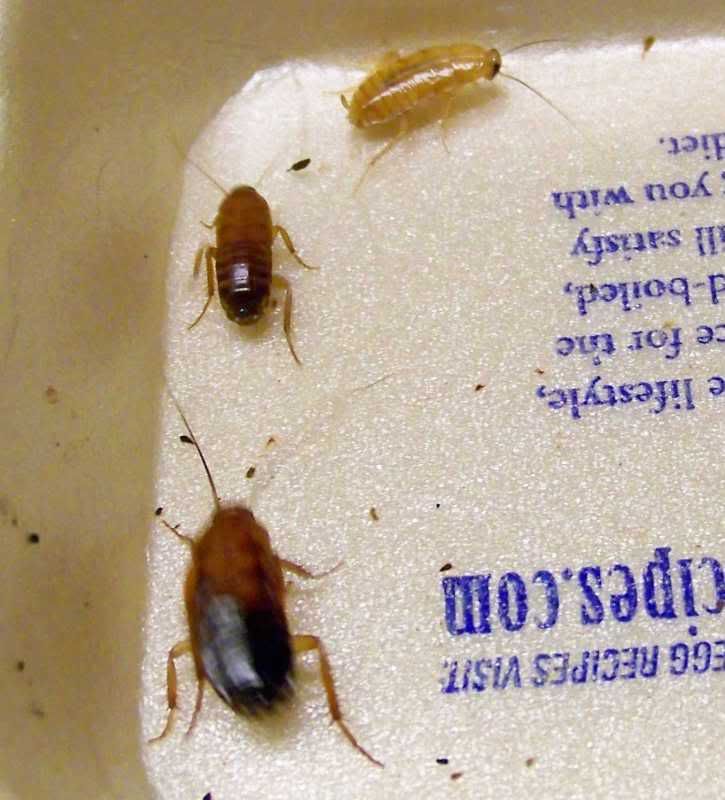
Full-grown female:
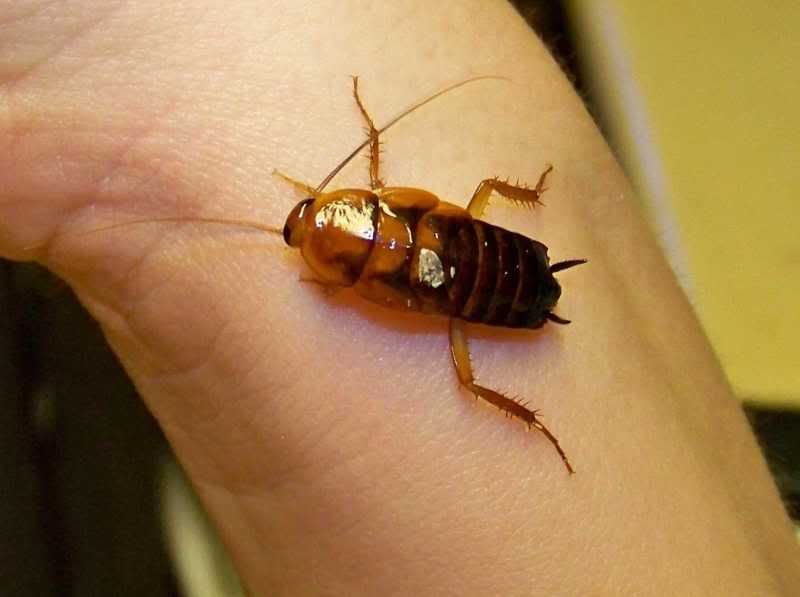
About 950 1/4"-1/2" crickets:
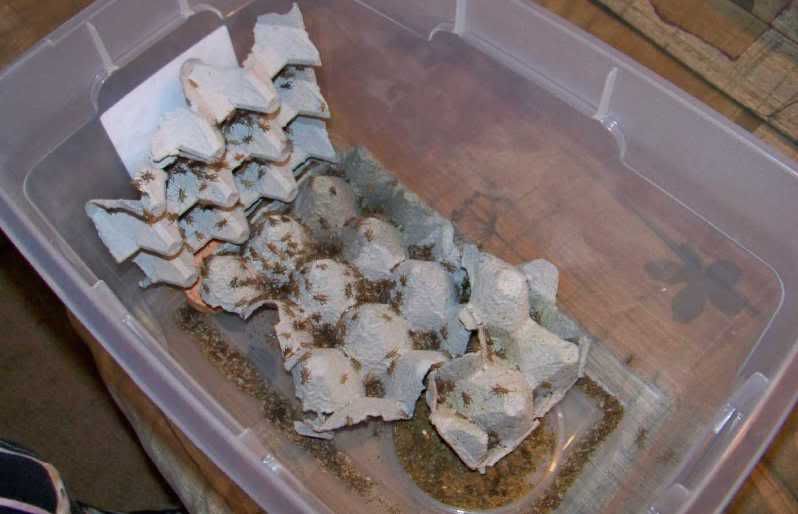
First is a pic of my T. molitor pupae. The darker one at the top are no good and will not turn into beetles. On the upper right of the dish is a newly emerged beetle (its exoskeleton has yet to harden, hence the blonde color.

Here's a close-up of the new beetle.

These are my mealworm colonies. The one on the left is for beetles and pupae, the one on the right has over 700 mealworms living in it.

Here's various stages of the mealworm life cycle. On the far right is a 1/4" mealworm. Next to it is a mealworm two sheds away from pupating. In the middle is a small freshly shed mealworm, appearing white in color. On the far left is a pupa, and to its right a mealworm in the dark phase before pupating.

This is a pic of my D. hydei colony. It's has every stage of the fly's life cycle present. You can see several sizes of larvae, new and old pupae, and adults.

This is my B. lateralis roach colony. I currently have about 50-60 females and nymphs, so they aren't producing young at the moment. (Any body want to send me some males?) lol. With the egg crates on and off (before cleaning).


Here's all of them:

Two different sized nymphs and a sub-adult female (the blond one has just molted):

Full-grown female:

About 950 1/4"-1/2" crickets:



